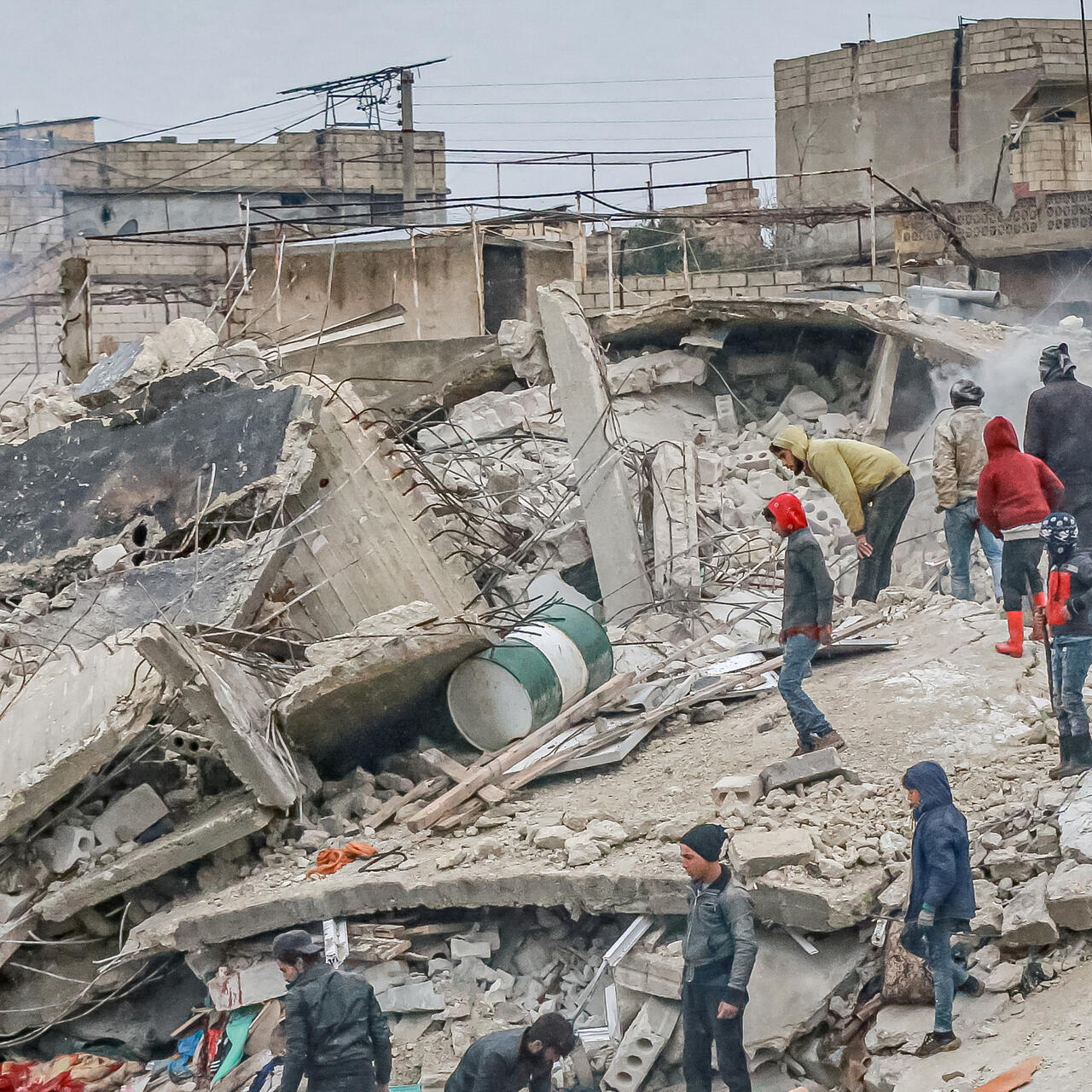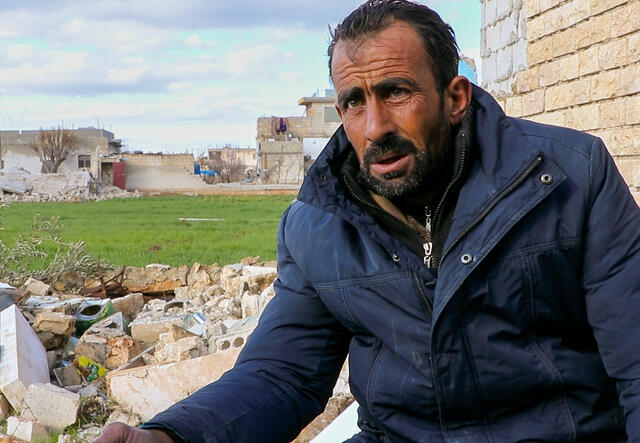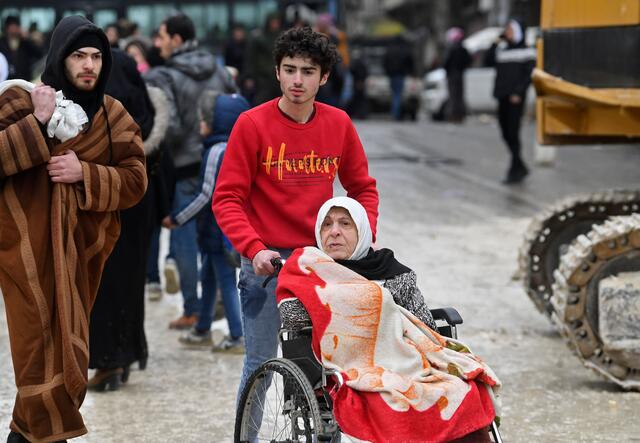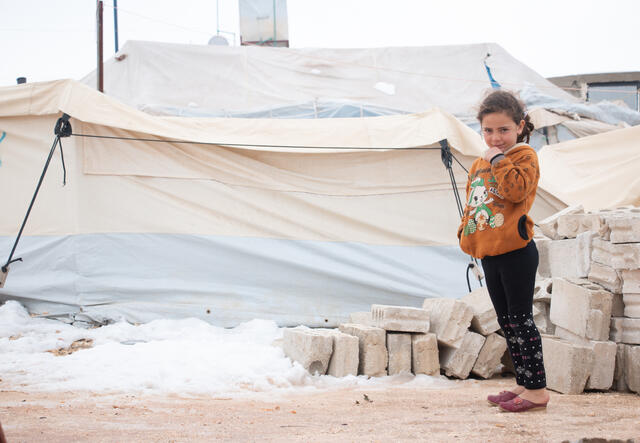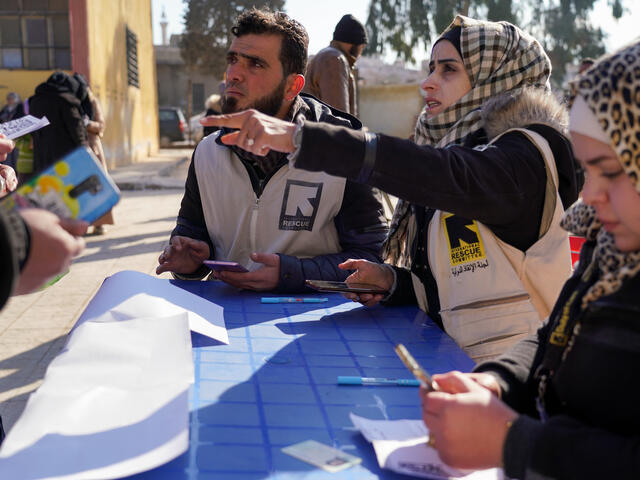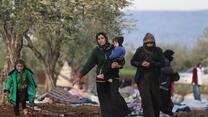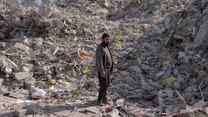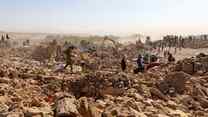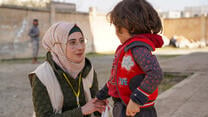In the early morning of February 6, a severe earthquake shook southern Turkey, also known as Türkiye, near the Syrian border. As first responders worked to save lives amid the devastation, hundreds of strong aftershocks followed.
Additionally, just two weeks later on February 20th, a 6.3 magnitude earthquake struck Hatay province, southern Turkey. Tremors were felt in Syria, Jordan, Lebanon and Iraq, with reports of more buildings collapsing and further fatalities.
Hundreds of thousands of people have been directly impacted across Turkey, Syria and neighboring Lebanon. Humanitarian needs in the region, which hosts many people displaced by the 12-year conflict in Syria, were already high before these earthquakes deepened the existing crisis.
Learn more about the developing crisis and what you can do to help
Where did the earthquake strike?
At 4:17am the first earthquake struck near the town of Gaziantep, Turkey, located about 50 miles north of the Syrian border. It may be the strongest to hit Turkey since 1939 when a quake of the same magnitude caused 30,000 deaths.
As rescue missions were underway, hundreds of aftershocks followed, the strongest with a magnitude of 7.5. This caused further waves of destruction, putting search and rescue workers at risk and impacting communities in southern Turkey, northern Syria and parts of Lebanon.
The earthquake and aftershocks have damaged roads, border crossings and critical infrastructure, severely hampering aid efforts.
Who is affected by the earthquake?
The earthquake has left hundreds of thousands of people dead and many more injured across the region. These figures are likely to increase as first responders continue to search through the rubble of homes and buildings.
At the same time, the devastation left by the quake will exacerbate the ongoing humanitarian crises in Syria and Lebanon. Both countries feature on the International Rescue Committee’s 2023 Emergency Watchlist of the places most at risk of deteriorating humanitarian crises in the coming year.
Faisal* and his family barely escaped with their lives as the Feb. 6 earthquake collapsed the roof of their rented house in northwestern Syria just after they crossed the doorstep. "A second's delay could have been fatal," Faisal says. The family had already been displaced from their own home by Syria's war.
Photo: Frontline in Focus
“Anywhere else in the world, this would be an emergency,” says Mark Kaye, the IRC’s director of policy, advocacy and communications for the Middle East and North Africa. “What we have in Syria is an emergency within an emergency.”
Syria
IRC staff responding on the ground in Syria report that the quake affected areas that host a high number of families displaced by conflict. Many of the people impacted have already been displaced up to 20 times.
“Those sixty seconds, or maybe a little more, summarized twelve years of war, of destruction, of displacement, of killing,” said Hamed*, the IRC’S Economic Recovery and Development (ERD) Manager in Syria.
“People have lost everything—their homes, their children, their source of living,” he added. “They lost everything they’ve got and ended up out in the open.”
The country’s ongoing war has weakened vital infrastructure, including the health system, reducing its capacity to respond to emergencies like this one. Only 59% of hospitals in Syria are fully functional.
Residents in Aleppo, Syria evacuate after earthquakes caused significant damage to the city.
Photo: AFP via Getty Images
Electricity across the affected area remains intermittent, with many parts of northern Syria completely off the grid. This includes mobile and internet outages, making the response and coordination even more difficult.
Gas supplies, which many rely on to heat their homes, have also been severely impacted—meaning that even if people are able to return to their homes they will have to endure freezing temperatures
Even before the quake, 2 million people were already lacking adequate housing during the harsh Syrian winter. This includes 800,000 people – most of them children – who live in makeshift shelters without reliable access to heat, electricity, clean water or sanitation services.
“Temperatures are plummeting to below zero, leaving thousands exposed,” says Tanya Evans, the IRC’s Syria country director.
Farah*, 7, and her family were displaced from their home and forced to move to northern Syria. Now they live in a makeshift tent that often collapses under the weight of snow.
“Women and children will find themselves particularly at risk of exploitation and abuse should they find themselves once again displaced,” she explains. “Many in northwest Syria have been displaced up to 20 times and with health facilities strained beyond capacity–even before this tragedy–many did not have access to the health care they critically need.”
While some nations have announced plans to provide earthquake aid to Syria, the existing international humanitarian response plan for the country remains severely underfunded with less than half of the $4 billion required to meet humanitarian needs.
Turkey
In Turkey, first responders are working to rescue families from buildings destroyed by the earthquake. Strong aftershocks, including the 7.5 magnitude quake that struck the Elbistan district, have complicated the relief efforts. Countries around the world have offered their support to the emergency response.
Lebanon
The initial earthquake was also felt in Lebanon, shaking homes for some 40 seconds. Many residents in the capital city, Beirut, evacuated over fears of collapsing buildings.
How is the world responding?
As local first responders in Turkey, Syria and Lebanon work to bring those injured in the quake to safety, the European Union has mobilized urban search and rescue teams to assist Turkey’s response, while United Nations agencies have launched their own emergency response in the region. Meanwhile, the U.S., U.K. and other countries have also sent personnel and aid to assist the emergency response efforts in Turkey.
The IRC is calling on the international community to urgently increase critical funding to both Syria and Turkey, to ensure that everyone affected gets the lifesaving support they need before it is too late.
How is the IRC responding to the earthquakes?
In the wake of the powerful earthquake, our teams in Syria are working tirelessly to ensure the safety and wellbeing of those affected. Our more than 1,000 staff inside the country are providing lifesaving health care and protection services along with other emergency early recovery support.
As humanitarian needs soar, we are launching an integrated response to affected populations across both Turkey and Syria. This will include the provision of immediate cash, basic items, such as blankets and towels, and hygiene supplies like soap, toothbrushes and feminine products. As part of our work to support essential health services in affected areas, the IRC launching two mobile health teams which will provide treatment and care to survivors. We will also set up safe spaces for affected women and children.
Learn more about the IRC’s response in Syria.
IRC staff providing emergency cash assistance for people at a camp for displaced people in northern Syria, where many people have been affected by the earthquake.
Photo: Frontline in Focus for IRC
How can I help?
Please donate. Your gift will help the IRC provide emergency services to families in Turkey and Syria, and to refugee families in countries around the world.
Learn more about how to help victims of the Syria-Turkey earthquake.
*Name changed or removed for privacy.
